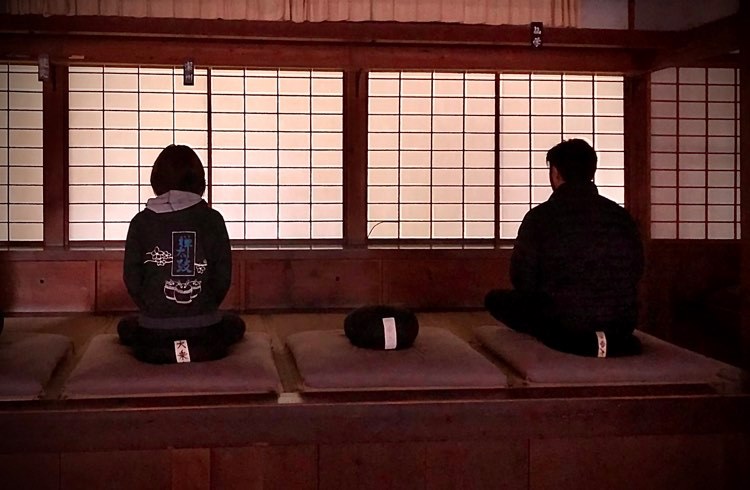
The Buddha’s posture
Practising zazen daily is very effective for the expansion of consciousness and the development of intuition.
Zazen not only generates great energy, it is also the posture of awakening.
During the practice one should not try to achieve anything. “It is only concentration on the posture, the breath and the attitude of the mind.
The posture
- Sitting in the middle of the zafu (round cushion), cross your legs in the lotus or half-lotus position. If this is not possible, cross the legs without placing the foot on the opposite thigh. It is still essential that the knees push the floor.
- The spine should be straight.
- Chin tucked in.
- The nape of the neck straight
- Nose in the same vertical line as the navel.
- Push the earth with the knees and the sky with the head.
- The left hand on the right hand
- Palms facing the sky, thumbs touching, forming a straight line.
- Hands rest on feet.
- The sides in contact with the abdomen.
- Shoulders are relaxed.
- The tip of the tongue touches the roof of the mouth.
- The eyes are set approximately one metre away on the ground without looking at anything in particular.
The breathing
Zen breathing cannot be compared to any other breathing. It is very ancient.
In Sanskrit it was called ‘anapanasati’, it can only arise from a correct posture. First of all it is about establishing a slow, strong and natural rhythm, based on a gentle, long and deep exhalation.
The air is slowly and quietly expelled through the nose, while the pressure due to the out-breath is forced down into the belly.
At the end of the out-breath, the in-breath comes naturally.
Masters compare the Zen breath to the mooing of cows or the exhalation of a screaming newborn baby.
The attitude of the spirit
Sitting in zazen, we let the images, the thoughts, the mental constructs, which arise from the unconscious, pass like clouds in the sky – without opposing or clinging to them.
Like reflections in a mirror, the emanations of the subconscious pass and pass again and again and eventually fade away. And we reach the deep unconscious, without thought, beyond all thoughts (hishiryo), true purity.
Such an attitude of spirit arises naturally from a deep concentration on posture and breathing, and thus enables the mental activity to be controlled, resulting in an improvement in cerebral circulation. Indeed, the cortex (seat of conscious thought) rests during zazen, while the blood flows to the deeper layers of the brain, which awaken from a state of drowsiness because they are better irrigated. Its activity gives the impression of well-being, serenity, calm, releasing fully awake, deep sleep brain waves ‘alpha’ and ‘theta’ (see research done at Komazawa University in Japan on this subject).
Text extracted from the website of Asociación Zen de Amértica Latin

